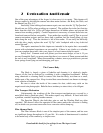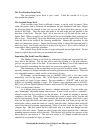Download this book for free at http://www.TheArgusA.com/
41
7 Restoration And Repair
One of the great advantages of the Argus A is how easy it is to repair. This chapter will
discuss repairs by dividing the camera into three main sections: the Body, the Neck, and
the Shutter (see Fig. 4-1).
Inevitably, when talking about camera repair, one runs into the “Q-Tip Question”:
Should one use Q-Tips when working on a camera? The problem lies in the fact that tiny
hairs from the ends of a Q-Tip will lodge themselves in hidden places and prevent the
camera from working properly. Careful inspection is necessary to ensure those hairs are
found and removed before reassembly. Your author has carefully used Q-Tips in several
camera restoration projects and has never had a problem, but has found plenty of stray
hairs along the way. Thus the decision is left to the reader. If one truly has difficulty
with this idea, simply replace the word “Q-Tip” with “toothpick with a tiny cloth tied
around the end”.
The repairs mentioned in this chapter are intended to be repairs that a reasonable
person with no/minimal experience can accomplish. If there is any doubt as to whether
you can complete these tasks, take your Argus to a local camera shop for repair.
Safety first! Common sense will protect you from most danger, so use it. If you
use any flammable fluid, you must ensure that there is no source of flame present and that
the area is well ventilated. When disassembling a shutter, wear eye protection to prevent
loose springs from flying out and damaging your eyes.
The Camera Body
The Body is largely a piece of bakelite and cleaning it is relatively simple.
Almost all dirt can be removed by scrubbing it with a dampened toothbrush. Before
using chemicals or cleaning fluids to remove dirt from the Body, test them on a small,
hidden part of the camera first. Keep in mind that some chemicals are known to damage
some varieties of bakelite.
Be sure to clean the inside of the camera for dust, which may settle on the
negative and ruin photographs. Bakelite has a tendency to attract dust, so be diligent.
Film Transport Mechanism
Unfortunately, the workings of the film transport mechanism are covered by a
metal block that is glued into place. This makes repairs very difficult. If faced with such
a problem, consider acquiring another camera.
The Sprocket Wheels, the shaft they spin on, and the Winding Shaft are often
corroded. This doesn’t affect the operation of the camera unless the corrosion is flaking
off, in which case you must remove the loose corrosion with a damp rag.
Film Advance Knob
The Film Advance Knob is one of the simplest parts of the camera, and has seen
no significant change throughout its 15 year life. It is made of aluminum and is attached
to the main body of the camera by a simple screw.


















